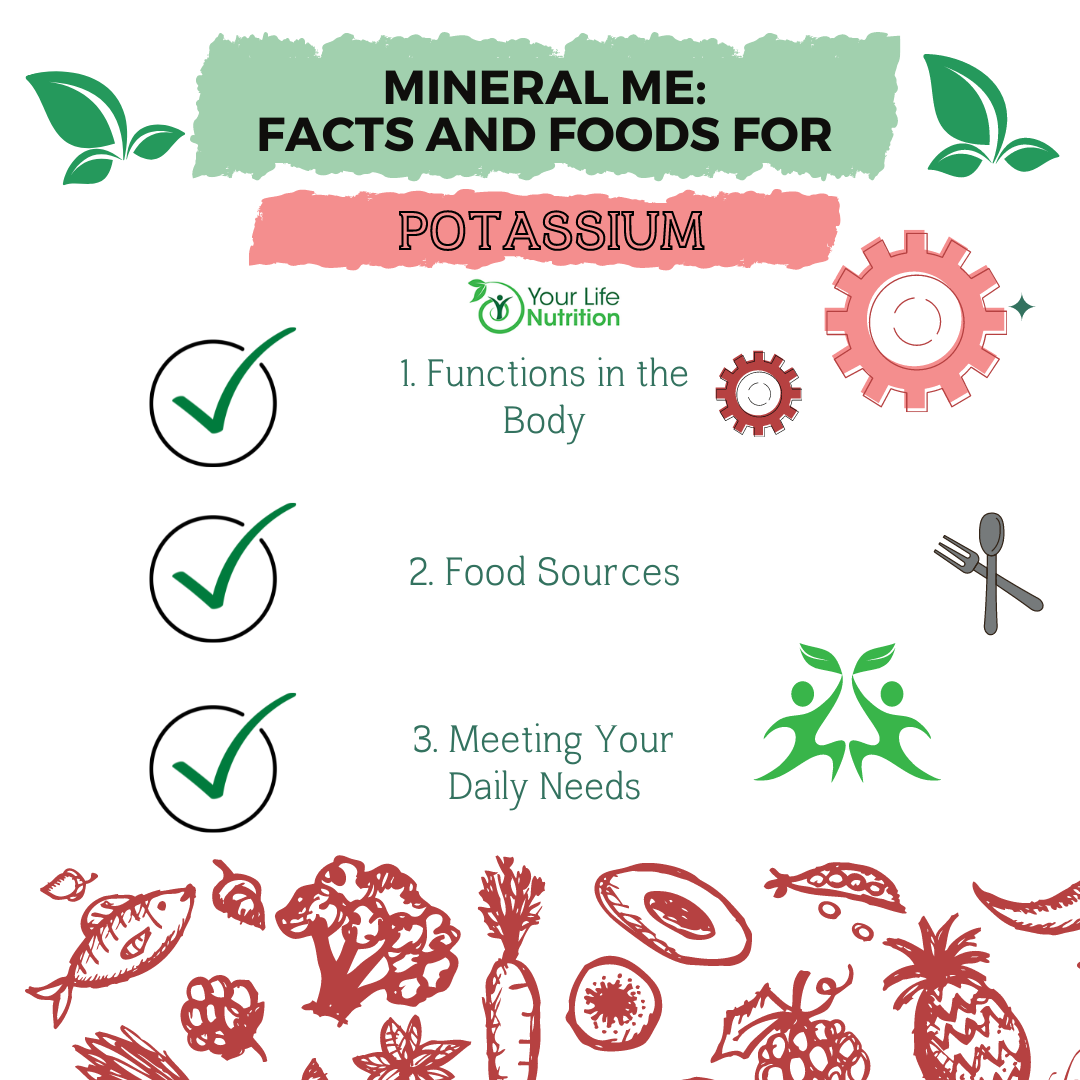Potassium is one of the essential minerals that our bodies require through the diet.1 This mineral is a coworker with sodium, which we talked about in the previous blog, and also carries the title of an electrolyte.1 This simply means that it carries an electric charge which enables it to activate cells and assist in nerve functions.1 Its main job is to maintain fluid balance which it accomplishes alongside its coworkers, sodium and chloride.1 Managing fluid in the body is a balancing act between water inside of the cell and in the surrounding outside of the cell.1 Potassium specifically works inside to ensure our cells stay hydrated from within.1 Some other important roles potassium plays in is muscle contraction and maintaining healthy blood pressure.1

So, how exactly do sodium and potassium work together? Well, their relationship resembles a teeter totter when it comes to maintaining fluid balance between inside the cell and outside the cell.2 When the level of one goes up, the other goes down and vice versa.2
In addition to dietary intake of potassium, the hormone aldosterone, kidney functioning, blood pH, vomiting, or medications can also influence the level of potassium in the blood and cells.2 Since the body needs more potassium than sodium and it is passed in the urine, potassium levels are able to drop below adequate levels which is extremely dangerous.2 Signs and symptoms to be aware of for abnormal (high or low) potassium include muscle cramps, weakness, nausea, diarrhea, frequent urination, dehydration, low blood pressure, confusion, irritability, paralysis, or abnormal heart rhythm.2

So how much potassium do we need every day? Well, unlike most minerals, the U.S Dietary Reference Intakes (RDI) could not be determined due to a limited amount of research, however, the National Academy of Medicine had provided an Adequate Intake (AI) to help individuals make sure they are supporting their daily needs.1 For Women ages 19 or older, 2,600 mg per day is recommended and for men 19 years or older, 2,500-2,900 mg is adequate per day.1
Here is a list of some great potassium sources:
- Baked Potato = 925 mg per potato
- Sweet Potato = 450 mg per potato
- Banana = 425 mg per fruit
- Clams = 535 mg per 3 oz.
- Spinach = 420 mg per ½ cup
- Lentils = 365 mg per ½ cups
- Prunes = 305 mg per 5
- Tomatoes – 290 mg per tomato
- Beans = 280 mg per ½ cup
- Turkey = 250 mg per 3 oz.
- Orange = 240 mg per fruit
- Broccoli = 230 per ½ cup

Potassium is such an interesting mineral that helps keep our body moving, hydrated, and able to communicate. The kidneys play a big role in helping our blood potassium levels stay in a healthy range and sodium helps it balance the fluid between the inside of the cell.1,2 This mineral is also super easy to incorporate into the diet which is good since it is such an important nutrient to have in our bodies. The next time you move your muscle, drink some water, or use your brain to communicate to the rest of the body, just remember it is all with the help of this social little nutrient.
References:
- Potassium. The Nutrition Source. https://www.hsph.harvard.edu/nutritionsource/potassium/. Published November 19, 2021. Accessed February 6, 2022.
- Potassium (K) in Blood Test. Potassium (K) in Blood Test | Michigan Medicine. https://www.uofmhealth.org/health-library/hw202677. Accessed February 6, 2022.
Post created by University of Akron student dietetic intern: Michaela Campbell





